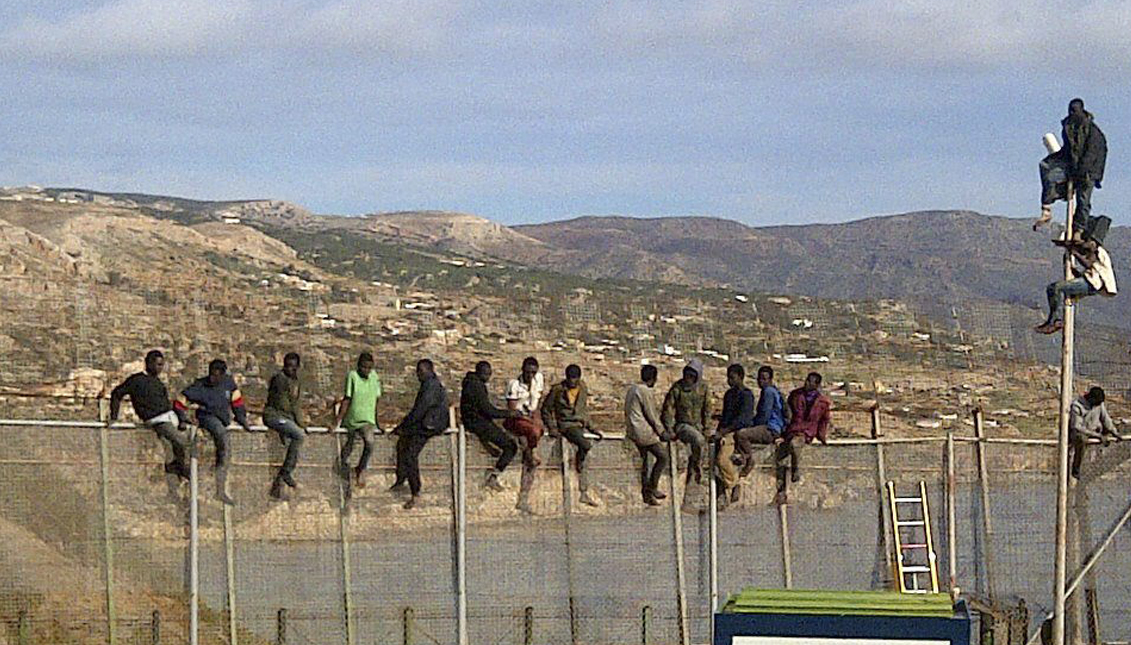
The walls of Europe that inspire Trump
Since the beginning of the century, European states have begun to build walls to prevent the arrival of migrants. The refugee crisis accelerates the process
The recent history of Europe is marked by the Iron Curtain that separated two ways of understanding life, the capitalist and the communist, for almost 30 years. A quarter of a century after celebrating a continent where more and more walls were disappearing, EU Member States have backtracked and begun to arm themselves again, this time to try to prevent the arrival of hundreds of thousands of refugees Syria, Iraq or Afghanistan. These strategies have inspired President Donald Trump in his proposal for the construction of a wall to prevent the arrival of migrants illegally from Mexico.
As the Washington Post unveiled during the election campaign, Trump confused the Melilla fence, one of the gateways from Africa to Europe that separates Morocco from the Spanish autonomous city on African territory, with the border with Mexico. In the announcement of 30 seconds appeared one of the massive jumps to the fence that occur in the border of South Europe, to remember his proposal to raise a great wall that avoids the entrance of people. The images corresponded in reality to a recording of 2014. However, that is the precursor of the wall policy of modern Europe and the inspiration of what Trump wants to build.
The Melilla fence, which is actually two, leaving a space of "nobody's land" in the environment where human rights are violated daily, began to be built in 1998 measuring three meters in height. At the time, it cost almost 35 million dollars. After the migrant crisis of autumn 2005, it rose to 6 meters. Today there are 12 kilometers of double fence with a 3 meter three-dimensional towage between them, full of surveillance posts, paths between the fences for the passage of vehicles, noise and movement sensors or night vision equipment and thermal cameras. In addition, recently has been added a metal mesh in which it is practically impossible to stick your fingers to help you climb.
The most controversial part of these fences are the concertinas, blades that were installed in 2005 in order to discourage those who tried to cross the border and that caused deep cuts to those who tried. The massive denunciations of different groups obtained that the government of the socialist Rodríguez Zapatero that had installed them, retire them in 2007. But in 2013, the conservative executive Mariano Rajoy returned to place them in a third of the route. Despite this, thousands of immigrants and refugees fleeing war and famine manage to jump every year.
[node:field_slideshow]
Not happy with the existing walls, the different Member States have built new barriers to try to curb the arrival of refugees. One of the most feared is the wall of the so-called Jungla de Calais, an improvised camp in France waiting for those trying to sneak into trucks crossing the UK via the English Channel. It is four meters high and one kilometer long. Its construction, which cost the British government despite being on French soil, amounted to 2.7 million dollars.
Calais is one of the last stops on the route of the refugees in search of a new life. After overcoming the maritime border between Greece and Turkey, they must confront the Balkans, the cold region between the Mediterranean and Germany, the destination of most of them. The first and most complicated frontier is that which separates Greece from Macedonia, where newly arrived refugees from the EU leave again. A fence full of concertinas along with an aggressive army and police, fight the arrival of migrants.
If they can cross that threshold, they will find a 175-kilometer hawthorn fence between Serbia and Hungary, the next entry back to the EU. The government of the conservative Viktor Orban, accused of undemocratic attitudes in his country, imposes penalties of 3 years of prison to those who cross the border of illegal form. By 2015, almost 400,000 people had crossed the country on their way to central Europe. If it were not for fear, that the fall of the Iron Curtain began by a cut in the barbed wire between Hungary and Austria could trigger the laughter.
It will not be enough. The last frontier before arriving in Germany, which separates Austria from Slovenia, was also sealed by hawthorn wires that have more than 4 kilometers in length and 12 controls at border crossings that have intensified in recent months. As a reaction, Slovenia threatens to raise a similar wall on its border with Croatia, as if dominoes were involved.
The fortress Europe is also armored in the Arctic Circle between Norway and Russia. The first one wants to build a steel wall of four meters high with the excuse of reinforcing security in one of the doors to the Schengen area, the agreement that establishes the free movement of European citizens between the countries of the continent.
According to a Reuters analysis, Europe has spent almost $ 600 million on building 1,200 kilometers of fence since the fall of the Berlin Wall. The figure is equivalent to almost 40% of the border between the United States and Mexico.
But the most effective and at the same time monstrous fence is the one that is not seen. In March 2016, Europe signed an agreement with Turkey whereby the country interned all migrants in detention centers with the aim of stopping the massive influx of asylum seekers. But it was not enough. The Syrian war and the lack of legal ways to seek asylum in any EU country without risking their lives continue to push hundreds of people into the arms of the Mafia every day, according to data from Frontex, the European Border Control Agency. Several NGOs have warned that the agreement violates international human rights treaties and believes that Turkey does not ensure the protection of refugees. So far, they have not been successful.











LEAVE A COMMENT: